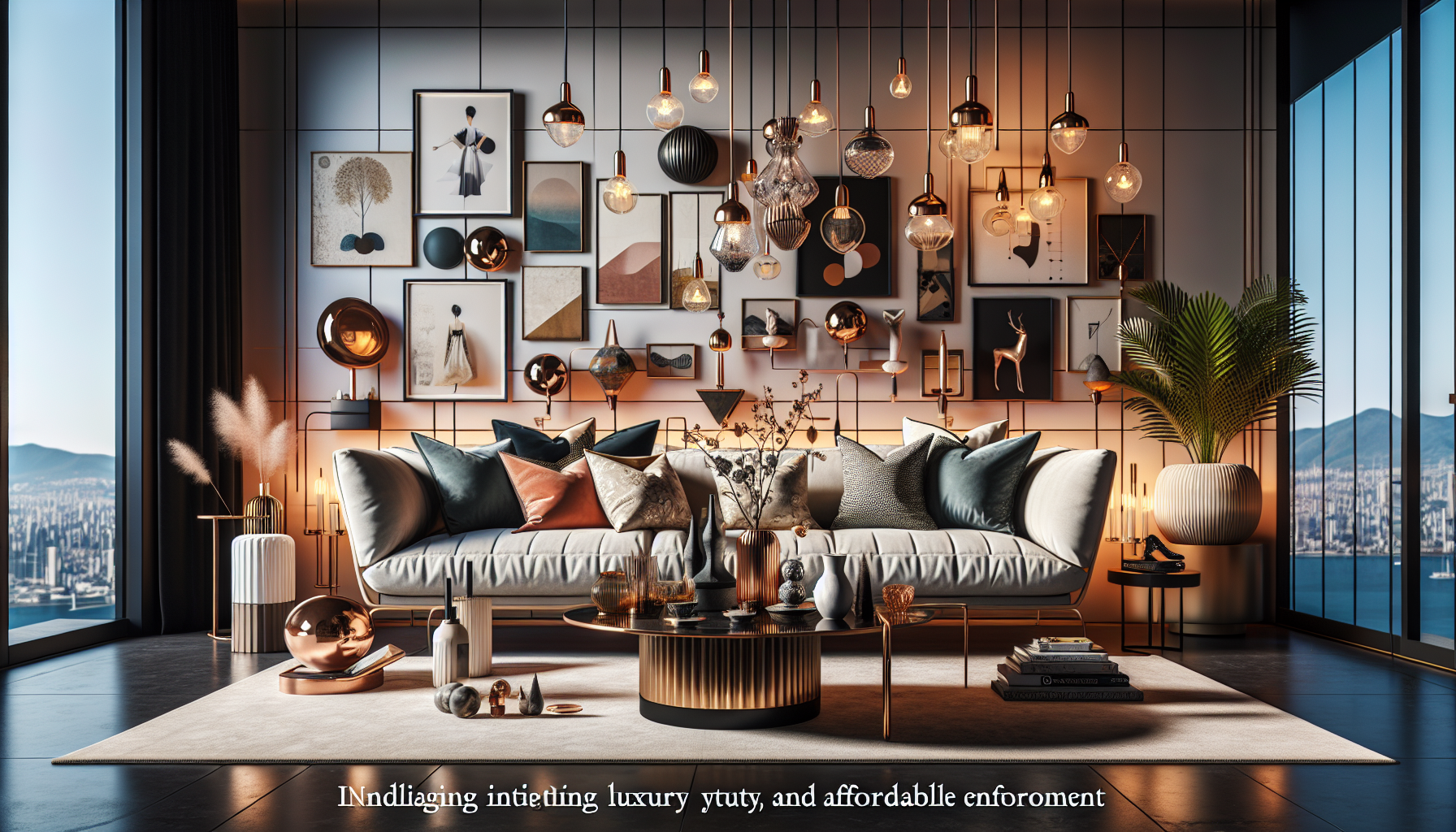“Choosing the right color palette for your home can be a transformative process, turning ordinary spaces into reflections of your personality and style. This course is designed to guide you through the journey of selecting the perfect hues, exploring how color theory influences mood, how your home’s lighting and architecture can affect color choices, and finally, how to harmoniously implement your unique color palette. Unlock the secrets to creating a cohesive, comforting, and vibrant living space with colors that speak to you.”
Lesson 1

Understanding Color Theory in Home Decor
Choosing the right color palette for your home starts with a solid grasp of color theory. Whether you’re looking to create a restful haven or an energizing space, knowing how colors work together can help you achieve your desired aesthetic. Let’s dive into the foundations of color theory and explore how it can transform your living space.
The Basics of the Color Wheel
The color wheel is your best friend when it comes to picking the perfect shades and hues for your home. It shows the relationships between primary colors (red, blue, and yellow), secondary colors (green, orange, and purple), and tertiary colors, which are combinations of the primary and secondary colors.
Warm Colors Versus Cool Colors
Understanding the color temperature is key. Warm colors, like reds, oranges, and yellows, evoke warmth and coziness, while cool colors, such as blues, greens, and purples, can create a calm and soothing atmosphere. Ponder on what feeling you want to evoke in each room of your home.
Psychological Effects of Colors
- Red: Vibrant and energizing, can increase appetite.
- Blue: Calming, promotes serenity and productivity.
- Yellow: Cheerful, can stimulate mental activity.
Take a moment to consider the mood you’re aiming for when selecting your color scheme.
Color Harmony and Balance
Achieving color harmony means colors in a room are pleasing to the eye and work well together. Play with complementary (opposite on the color wheel), analogous (next to each other on the color wheel), or triadic (equally spaced on the color wheel) color schemes to create a balanced look.
Creating Flow with Color
Smooth transitions between rooms are important. Use your chosen color palette to create a sense of unity throughout your home, while allowing each room to have its own character.
Developing a Cohesive Color Plan
Now that you’ve got a handle on color theory, it’s time to put that knowledge into action. Design a cohesive color plan that reflects your personal style and complements your home’s unique character.
Room by Room: The Role of Color
Consider the primary function of each room. A bedroom might call for a serene and calming palette, while a home office may benefit from a more stimulating and vibrant scheme. Choose your colors accordingly to support the room’s purpose.
Testing Your Colors
Before committing to a paint color, test it out. Purchase samples and paint small sections on different walls to see how the color looks at different times of day and under various lighting conditions.
The Finishing Touch: Decor and Accessories
The right color palette extends beyond your walls. Incorporate textiles, artwork, and home accents that complement your color scheme to tie the room together beautifully. It’s all about finding the right balance and knowing when to add a pop of color or pare things back for harmony.
Your Color Palette and Lighting
Don’t forget to consider how natural and artificial light will impact your colors. Some hues may appear vastly different under sunlight versus lamplight, so take the time to observe your color choices under various lighting throughout the day.
Lesson 2

Assessing Your Space for the Perfect Color Palette
Unveiling the right color palette for your home isn’t just about picking your favorite shades—it’s an art that requires a keen eye for the unique aspects of each space. As we explore the second lesson in crafting a color scheme, remember that the goal is to select colors that enhance the natural architecture of your home and complement the existing light.
Analyzing the Purpose of Each Room
Colors create more than just visual appeal; they evoke emotions and set the mood. Paint your home with purpose by first considering the function of each space. For a bedroom, seek colors that invoke tranquility and rest. For a lively kitchen, choose hues that stimulate conversation and appetite.
Lighting’s Effect on Color
It’s fascinating how light transforms color. What looks like a vibrant canary yellow under the noon sun may take on a softer mustard tone by lamplight. Test your potential color selections in the very room they will live, checking back at different times of day to see their true character shine through different lighting scenarios.
Color and Your Home’s Architecture
Your home’s bones—its architectural style, moldings, built-ins, and beams—deserve attention. Let the colors you choose for your walls, trims, and accents highlight these features, rather than overshadow them. The right color palette can accentuate the charm and craftsmanship of your home’s design.
Creating a Cohesive Color Flow
As you transition from one room to the next, the colors should flow naturally. Maybe it’s the muted earth tones that whisper from the living room into the hallway, or perhaps it’s the coastal blues that seem to carry you from the bathroom into the bedroom. Whatever your theme, consistency is your secret ingredient.
Navigating Natural and Artificial Light in Color Choice
Once you’ve identified the function of your rooms and considered their architectural nuances, it’s time to play with light. Your chosen color palette must be adaptable, looking as intended under both the sun’s rays and the warm glow of indoor lighting.
Choosing Colors for Varying Lighting Conditions
As light changes throughout the day, so will the appearance of your colors. A paint color might take on a cooler or warmer tone depending on its exposure. Deliberately select hues that hold their beauty and balance under both the midday sun and the soft luminescence of your evening lamps.
Enhancing Your Home with a Personal Touch
Picking the right color palette for your home is a personal journey. Trust your instincts, utilize samples to make sure your choices resonate with you, and most importantly, create a space that speaks to your heart. After all, your home is where your story unfolds.
Lesson 3

Implementing a Color Palette That Speaks to You
When you’ve chosen the perfect color palette for your home, the next step is to bring it to life. This transformative journey allows you to infuse your living spaces with personality and style. From selecting shades to the final stroke of the brush, each step enhances the aesthetic and vibe of your home.
Building Your Perfect Color Palette
Start with your beloved colors and consider their role in the color scheme of your home. Look at the big picture—how will these colors interact from one space to another? Achieving a seamless flow is akin to composing a symphony, where each color plays its part in harmony with the others.
Color Sampling: A Test Drive for Your Walls
Before fully committing to a paint color, test it out. A sample can tell you volumes about how a color behaves in your home’s unique lighting and alongside your decor. Live with these samples for a few days, observe them at different times, and let your confidence in your choice grow.
Dressing Up Your Space with Textiles and Art
Color doesn’t stop at your walls. It threads through your choice of textiles, artwork, and accessories. These elements are the cherries on top of your color palette, bringing richness and depth to the canvas you’ve painted. Choose them thoughtfully to complement and accentuate your palette.
Accessorizing in Harmony with Your Color Palette
With your walls setting the stage, the art of accessorizing allows you to complete the narrative of your home. It’s where your color palette truly becomes part of the living fabric of your space, telling its story through texture, form, and hue.
The Role of Textiles in Your Color Story
Textiles serve as both comfort and communication. They speak volumes about your style and can tie disparate elements together with a whisper of color or a bold statement. From throw pillows to curtains, choose textiles that resonate with your color palette and intended ambiance.
Artwork and Decor: The Finishing Touch
Artwork and decor are not afterthoughts but integral chapters in your home’s color story. The pieces you select should enhance the overall harmony of your palette while allowing your personality to shine through.
Creating Balance with Color
Finding the right balance in your color scheme is crucial. It’s a dance between contrast and cohesion. Just as a painter selects the perfect hues to make a scene come to life, so should you choose colors that bring balance and beauty to your everyday surroundings.
Making Changes with Confidence
As your tastes evolve, so might your color palette. Embrace change confidently knowing that with the right approach, a fresh coat of paint or new accessories can revitalize your space, reflecting the current chapter of your life.
Choosing the right color palette for your home is a journey that blends art, science, and a touch of personal magic. By understanding color theory, considering your space and lighting, and implementing your chosen colors with care, you can create a home that resonates with warmth and personality. As you reach the end of this course, reflect on the harmony of colors that now surround you and the newfound confidence in your design decisions. Ready to put your knowledge to the test? Below this conclusion, you’ll find a 10-question quiz to see just how much you’ve learned about creating the perfect home color palette.
Test Your Knowledge With this short Quiz
Click here to copy your score to share on facebook!







